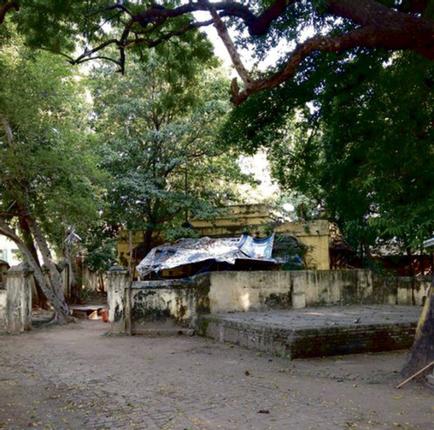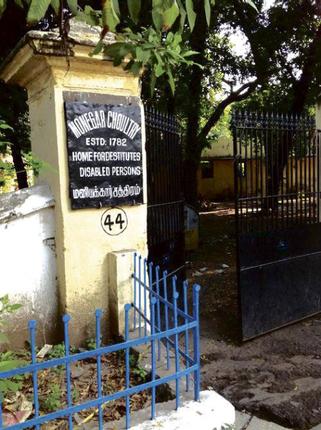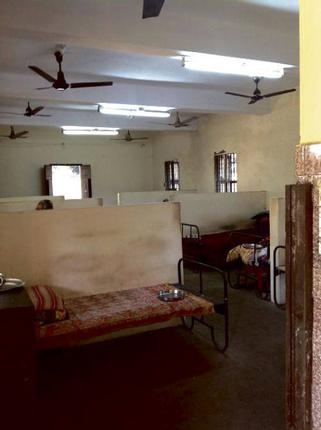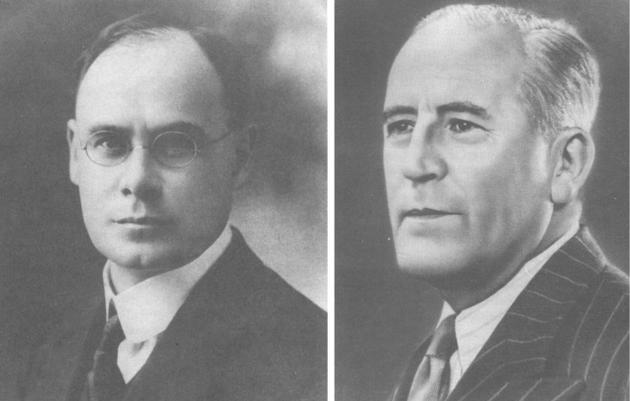Kamini Dhandapani, on holiday here from the U.S., writes to tell me that on a nostalgic visit to the Monegar Choultry, she found it anything but run-down, in fact much of it looked spick and span. The nostalgia relates to the fact that her grandfather, a doctor, was the Superintendent in charge of the choultry for many years and that as children, she and her siblings spent a lot of time in the institution while visiting him every Sunday.

Monegar Choultry is probably the oldest organised charity in India; it certainly is in the South, what was once the Madras Presidency. Following the famine of 1781, the choultry was established in 1782 by a Committee comprising members of the Government and of the St. Mary’s-in-the-Fort congregation taking over a private gruel centre just outside the northern town wall. In 1808, the Government took over responsibility from the Committee and has ever since run the choultry.

Initially a poor-feeding centre, the choultry was developed as an old age home for the destitute, primarily for women, but later with accommodation for men. Today, it has around 60 residents, most of them women. And it is the women who virtually run the place, cooking and serving the food — Kamini says it is food of the quality and variety you would get at home — keeping the premises clean, and looking after the cubicles. Kamini’s picture of the dormitory reflects how well the premises are kept. I wonder how many other Government institutions are as well kept.

In 1799, Company Surgeon John Underwood established facilities in the choultry to treat the aged there and this soon grew into the ‘Native Infirmary’, the first formal Western medical facilities for Indians. Amalgamating it in 1809 with a younger Native Hospital in Purasawalkam, Monegar Choultry Hospital was developed by the Government to become the first organised hospital in North Madras for Indians. In 1909, the Government took over the facility and renamed it the Royapuram Hospital. In due course it was to become Stanley Medical College and Hospital.
When the Government established the Royapuram Hospital, the old age home moved into the adjoining premises by which came up the like-minded Rajah of Venkatagiri Choultry. Eighty years later, around 1990, many of the dilapidated old buildings of the Monegar Choultry were pulled down and today’s tidy campus developed. It is today an institution you can hardly find any fault with, says Kamini.
A visit to Grayshott
The other day, I called on friends at a rather handsome gated community named Ceebros Grayshott,which boasts of 110 apartments. When they asked me where the name came from, I remembered a developer once asking me what could be done to the house called Grayshott which was in the midst of a nearly three-acre property he planned to develop. I had suggested he make it a clubhouse for the development, particularly keeping in mind its history. He, however, sadly demolished it and another magnificent garden house vanished from the Madras heritage scene.

Once, the Grayshott property was part of a huge acreage called Bishop’s Gardens, the first and only building in the Gardens dating to 1817. At some point in time the gardens came into the hands of P. Venkatachellum, the famous condiment maker in the European market but better known in Madras for the 100 or so properties he owned in some of the best areas in town. In 1927, Venkatachellum’s son P.V. Subramaniam sold Bishop’s Gardens in a distress sale, to whom and how much being not traceable. What is known is that the property was parcelled out and sold to different buyers. John Oakshott Robinson, the Chairman of Spencer’s and possibly the first takeover king in India, bought nearly three acres during the division for Rs.14,750 and gifted it to his son-in-law and fellow director Stanley Edwards as a wedding present. Another large acreage with the original house — Bishop’s Gardens — in it, was bought for the philosopher-guru, Annie Besant’s messiah, J. Krishnamurthi, by some of his followers in 1934 and renamed Vasantha Vihar. It today serves as the Krishnamurthi Foundation’s Study Centre.
The neighbouring plot was named Grayshott when Edward and his wife built their mansion in it, the name deriving from the village where they had got married, her father having settled there. The 7,000 sq.ft. mansion Grayshott the Edwards’ built in art deco style was moved into in 1929/30 and remained their home till they left in 1957. Edwards was a racing man and also a very popular extrovert. The racing parties he held on racing weekends and others he held during the rest of the year were remembered as “memorable” by those who attended them. That is why I had suggested to the developer of the gated community that he retain it as a clubhouse where the residents’ association could hold more memorable parties. Neither happened.
When the Edwards’ left, Spencer’s took over the property for Rs.1,50,000 and successive managing directors occupied it — but without the flair of Edwards. When Spencer’s began to downsize operations in the 1990s and was trying to sell the property, the Income Tax Department bought it for Rs.191.8 million. What they sold it for I do not know, but how the property values had appreciated in 70 years!
When the postman knocked…
* Eagle-eyed N.S. Yogananda Rao, with an elephantine memory, takes me to task for repeating in Miscellany December 21, 2015 an item that appeared in The Hindu on December 25, 2011. He was referring to the letter to the Editor of The Hindu appealing to Srinivasa Ramanujan, who had run away from home, to return. Rao wonders whether it was an “oversight” or “mere repetition”. I would say neither.
Much of what appears in this column, which is based on factual information, and not being fiction or literary creativity, would have appeared somewhere else in the past, in The Hindu itself, perhaps in the columns of other newspapers, in journals and books. Someone might have come across a particular bit of information elsewhere but to most readers it would be ‘new-s’. As this bit of information was to me; I for one had not come across it till the Sreedharan biography was sent to me. And I’m sure that the information, even in ‘re-use’, would have been ‘new-s’ to many a reader of this column, particularly in the context of much else about Ramanujan being offered in it. I wonder whether Rao had come across the “attempted suicide” story before; I hadn’t.
* My little tale last week about playing fortune-teller reminded Dr. N Sreedharan that Khushwant Singh had confessed to the same experience some 30 years ago during a speech at IISc, Bangalore. Narrating what he did, when he was Editor of the Illustrated Weekly of India, whenever astrologer Bejan Daruwala’s forecasts did not reach him in time, Singh said that to avoid disappointing readers who looked forward to the column, he wrote the predictions himself. “I was quite familiar with the jargon,” he had added. And then related that there would often be Letters to the Editor after each week stating that the predictions in the last issue were better than usual!
* Did the British ride to the hounds in Madras was an e-mail query I received from a chronicler in Britain, E. Jameson. They certainly did, but for jackals and not foxes. And the hounds came out once a year in an East Indiaman and were kennelled not far from wherever the Madras / Adyar Clubs were located. There was a Madras Hunt which assembled at either of the Clubs and rode to the hounds south of St. Thomas’ Mount or in the west in the Koyambedu area. There are references to a Madras Hunting Society as early as 1776, which would make the Madras Hunt the oldest in the country. The sport seems to have died out soon after the Great War, in the 1920s. Work and Sport in the Old ICS by W.O. Horne (1928) paints some nice word pictures of the sport in Madras.
source: http://www.thehindu.com / The Hindu / Home> Features> MetroPlus> Madras Miscellany / by S. Muthiah / Chennai – January 09th, 2016